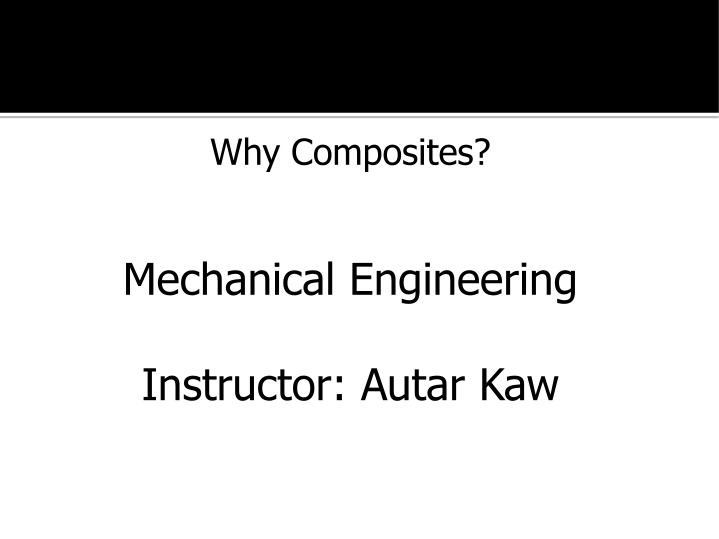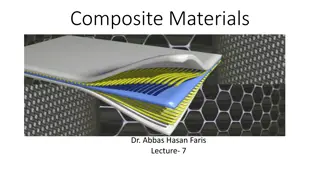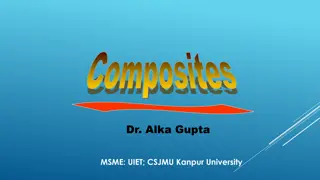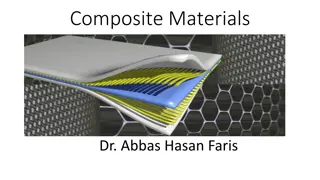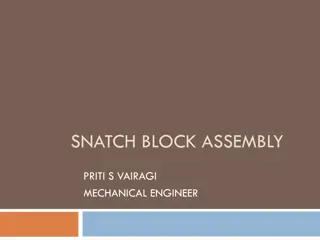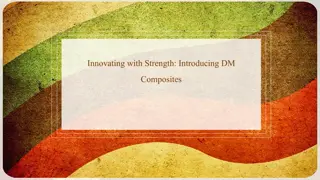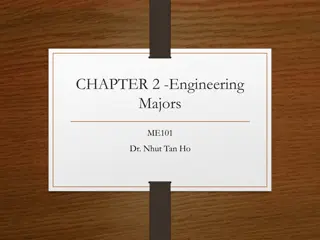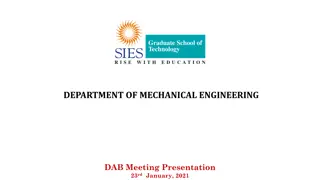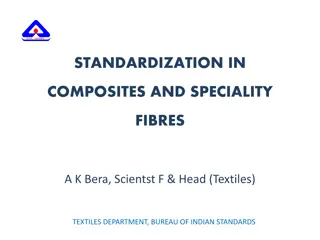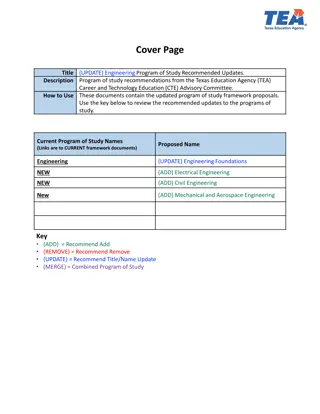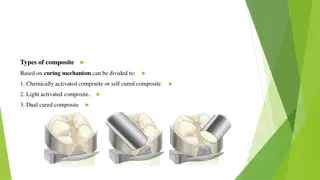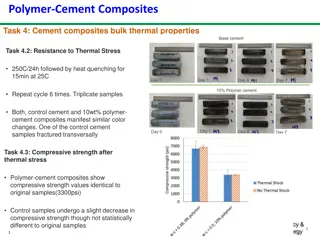Why Composites in Mechanical Engineering
Although composites have been used for thousands of years, advanced composite technology has been primarily applied in the aerospace industry in recent decades. This course aims to analyze and design fiber-reinforced composite materials, covering terminology, mechanical response prediction, and structural design of composite material structures. Students will explore designing drive shafts, pressure vessels, and more with composites.
Download Presentation

Please find below an Image/Link to download the presentation.
The content on the website is provided AS IS for your information and personal use only. It may not be sold, licensed, or shared on other websites without obtaining consent from the author.If you encounter any issues during the download, it is possible that the publisher has removed the file from their server.
You are allowed to download the files provided on this website for personal or commercial use, subject to the condition that they are used lawfully. All files are the property of their respective owners.
The content on the website is provided AS IS for your information and personal use only. It may not be sold, licensed, or shared on other websites without obtaining consent from the author.
E N D
Presentation Transcript
Why Composites? Mechanical Engineering Instructor: Autar Kaw
If you don't let a teacher know at what level you are - by asking a question, or revealing your ignorance - you will not learn or grow. You can't pretend for long, for you will eventually be found out.Admission of ignorance is often the first step in our education. Steven Covey - Seven Habits of Highly Effective People
"Do not give them any more straw to make bricks with, as your custom has been; let them go and find straw for themselves" (Exodus 5). Although man-made composites have existed for thousands of years, the high technology of advanced composites has been used in the aerospace industry only for the last thirty years. The applications are becoming diverse ranging from aircraft structures and missile canisters to tennis racquets and fishing rods. The objective of this course is to analyze and design fiber reinforced composite materials.
Be able to know terminology of advanced composite materials and their applications. Be able to develop fundamental relationships for predicting the mechanical and hygrothermal response of multi-layered materials and structures. Be able to develop micromechanical and macromechanical relationships for lamina and laminated materials with emphasis on continuous filaments. Design composite material structures such as thin pressure vessels and thin-walled drive shafts.
Machine Design and Analysis I, EML 3500 or equivalent. Computational Methods, EML3041 or equivalent.
By end of this course, you will be able to answer the following three questions about design and analysis of composite materials.
Question 1 How do I design a drive shaft made of composite materials and is it any better than making it out of steel or aluminum?
A drive shaft for a Chevy Pickup truck is made of steel. Check whether replacing it with a drive shaft made of composite materials will save weight?
Light weight ___ reduces energy consumption; increases amount of power transmitted to the wheels. About 17-22% of engine power is lost to rotating the mass of the drive train. Fatigue resistant ___ durable life. Non-corrosive ___ reduced maintenance cost and increased life. Single piece ___ reduces manufacturing cost.
Prevent injuries the composite drive shaft broom on failure
Design Constraints 1. Maximum horsepower= 175 HP @4200rpm 2. Maximum torque = 265 lb-ft @2800rpm 3. Factor of safety = 3 3. Outside radius = 1.75 in 4. Length = 43.5 in
Torque Resistance. Should carry load without failure Not rotate close to natural frequency. Need high natural frequency otherwise whirling may take place Buckling Resistance. May buckle before failing
Question 2 Why does the two-ply balsa-wood laminate twist and bend under bending load when stacked one way, and why does it only bend when stacked another way?
Question 3 How do I design a pressure vessel? Is it better than building it out of steel?
Question 3 Why does the penis not bend on erection? D. Kelly, Penises as Variable-Volume Hydrostatic Skeletons , Annals of the New York Academy of Sciences, Volume 1101, Reproductive Biomechanics pages 453 463, April 2007.
